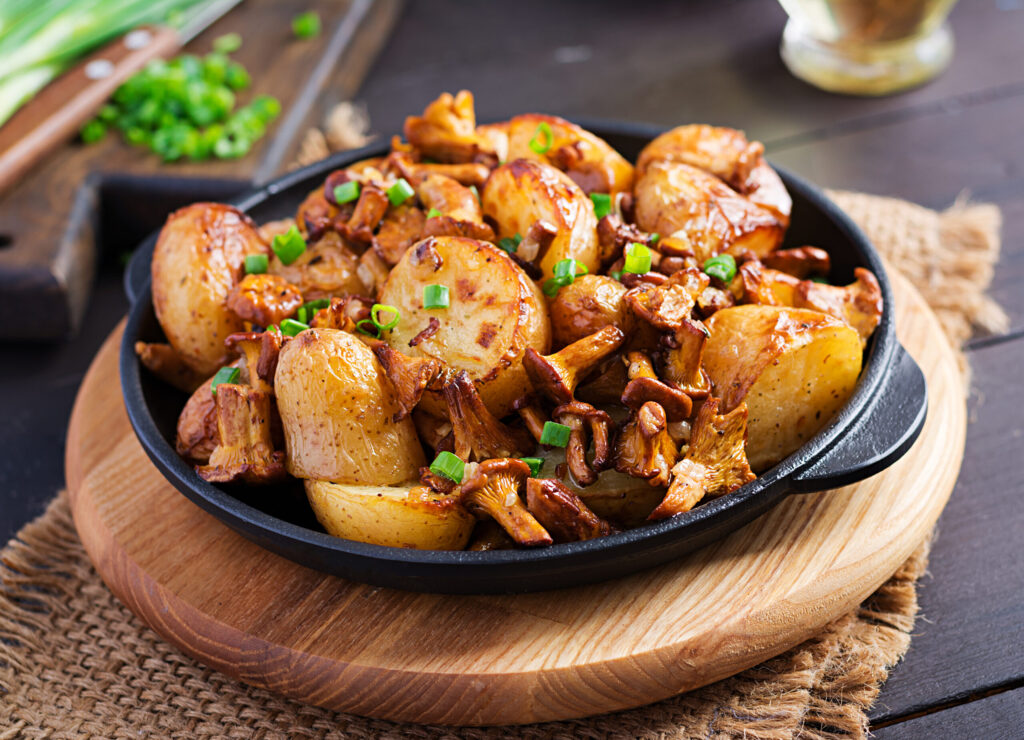
Potatoes often get a bad reputation in discussions about diabetes, but the truth about potatoes and blood sugar is more encouraging than most people realize. They can absolutely be part of a balanced diabetic diet when approached thoughtfully.
The key lies in understanding their impact on blood sugar and using science-backed strategies to enjoy them without compromising health.
Types of Potatoes Best for Blood Sugar Control
Sweet Potatoes: A Diabetic-Friendly Choice
Sweet potatoes have a lower glycemic index (GI) compared to regular white potatoes.
Their fiber content slows digestion, leading to steadier blood sugar levels. Plus, they’re rich in beta-carotene, an antioxidant that supports eye and skin health—areas that people with diabetes often need to protect.
Tip: Bake or roast sweet potatoes with a drizzle of olive oil for a delicious, nutrient-dense side.
Purple and Red Potatoes: Nutritional Powerhouses
Purple and red potatoes aren’t just colorful—they’re nutritional goldmines.
They contain anthocyanins, powerful antioxidants that have been linked to improved insulin sensitivity. Their moderate GI makes them a safer choice than russet varieties.
Pro Tip: Keep the skin on when cooking to maximize fiber intake!
The Role of Resistant Starch in Blood Sugar Management
What is Resistant Starch?
Resistant starch is a special type of carbohydrate that acts more like fiber than sugar. It passes through the digestive system undigested, helping to feed beneficial gut bacteria and blunt blood sugar spikes.
Cooling Potatoes to Maximize Benefits
When you cook and cool potatoes, resistant starch levels increase significantly.
Making a chilled potato salad using boiled, cooled potatoes, olive oil, vinegar, and fresh herbs is a fantastic way to enjoy potatoes with minimal blood sugar impact.
| Method | Effect on Resistant Starch |
|---|---|
| Hot Boiled | Low resistant starch |
| Cooled After Cooking | High resistant starch |
| Reheated After Cooling | Some resistant starch retained |
Mastering Portion Control with Potatoes
How Much Potato Can a Diabetic Eat?
Portion size is crucial.
A good rule of thumb is one small potato (about the size of a sardine can) or half a cup of mashed potatoes.
This portion provides about 15 grams of carbs, which fits easily into a diabetic-friendly meal plan when balanced with lean proteins and non-starchy veggies.
How Preparation Affects Potatoes

Best Cooking Techniques for Diabetics
- Roasting with skins on: Retains fiber and nutrients.
- Boiling and cooling: Boosts resistant starch.
- Microwaving: Preserves nutrients without adding fat.
Methods to Avoid for Better Health
- Frying: Adds unhealthy fats and extra calories.
- Instant mashed potatoes: Often loaded with sodium and lack fiber.
- Chips: Highly processed and spike blood sugar quickly.
Better alternative: Try oven-roasted potato wedges seasoned with herbs and a touch of olive oil.
Smart Food Pairings to Stabilize Blood Sugar
Best Proteins, Fibers, and Fats to Add
Pairing potatoes with lean proteins, healthy fats, and high-fiber foods slows digestion and blunts blood sugar spikes:
| Food Category | Examples |
|---|---|
| Protein | Grilled salmon, tofu, eggs |
| Fiber | Leafy greens, lentils, roasted veggies |
| Healthy Fats | Olive oil, avocado, nuts |
Extra Tip: A splash of vinegar or lemon juice can lower a meal’s overall glycemic impact!
RD, LD Julius Sammah
MyHealthCop Certified Dietician
Ready to Take the First Step?
👉 Book a 1-on-1 Session with any of our Certified Dietitian professionals to start your health journey today. [DOWNLOAD THE APP]
FAQs
| Question | Answer |
|---|---|
| Can people with diabetes eat potatoes every day? | It’s best to eat potatoes in moderation, a few times per week, and always balance them with fiber, healthy fats, and lean proteins. |
| Which type of potato is best for blood sugar control? | Sweet potatoes, purple potatoes, and red-skinned potatoes have lower glycemic indexes and are better choices compared to russet or instant varieties. |
| Can vinegar help reduce the blood sugar impact of potatoes? | Yes! Adding acidic ingredients like vinegar or lemon juice to a potato dish can help lower the meal’s overall glycemic response. |
YI